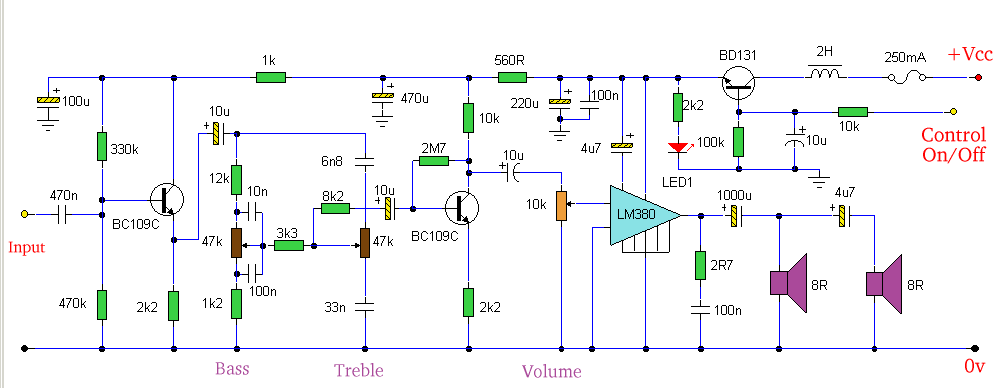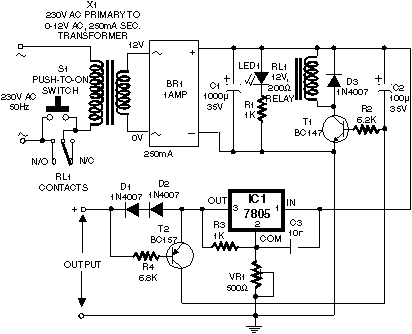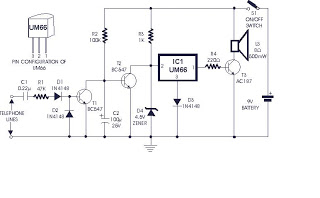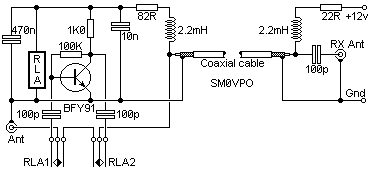
Amp with Tone Controls & Soft Switching

Amplifier with tone controls and soft switching. Notes: The soft switching is enabled by a BD131 transistor configured as a switch in an emitter follower arrangement. The collector is connected to a permanent load.
The described amplifier circuit incorporates tone controls to adjust the frequency response and enhance audio quality. The tone control section typically includes bass, midrange, and treble controls, allowing users to tailor the sound output to their preferences. The implementation of soft switching is a notable feature, achieved through the use of a BD131 transistor. This transistor is configured in an emitter follower arrangement, which provides a high input impedance and low output impedance, ensuring minimal loading on the preceding circuit stages.
In this configuration, the collector of the BD131 transistor is connected to a permanent load, which stabilizes the operation of the transistor and ensures reliable switching performance. The use of soft switching minimizes the audible clicks or pops that can occur during the switching process, leading to a smoother transition between different operating states of the amplifier.
The overall design of the amplifier should also consider power supply decoupling, adequate heat sinking for the transistor, and proper grounding techniques to prevent noise and interference. Additionally, selecting appropriate capacitors and resistors for the tone control circuits will significantly impact the amplifier's performance, particularly in terms of frequency response and signal integrity.
Implementing these design principles will result in a high-quality audio amplifier capable of delivering enhanced sound with user-friendly tone control features.Amp with Tone Controls & Soft Switching. Notes: The soft switching is enabled by a BD131 transistor wired as a switch in emitter follower configuration. The collector is wired to a permanent. 🔗 External reference
The described amplifier circuit incorporates tone controls to adjust the frequency response and enhance audio quality. The tone control section typically includes bass, midrange, and treble controls, allowing users to tailor the sound output to their preferences. The implementation of soft switching is a notable feature, achieved through the use of a BD131 transistor. This transistor is configured in an emitter follower arrangement, which provides a high input impedance and low output impedance, ensuring minimal loading on the preceding circuit stages.
In this configuration, the collector of the BD131 transistor is connected to a permanent load, which stabilizes the operation of the transistor and ensures reliable switching performance. The use of soft switching minimizes the audible clicks or pops that can occur during the switching process, leading to a smoother transition between different operating states of the amplifier.
The overall design of the amplifier should also consider power supply decoupling, adequate heat sinking for the transistor, and proper grounding techniques to prevent noise and interference. Additionally, selecting appropriate capacitors and resistors for the tone control circuits will significantly impact the amplifier's performance, particularly in terms of frequency response and signal integrity.
Implementing these design principles will result in a high-quality audio amplifier capable of delivering enhanced sound with user-friendly tone control features.Amp with Tone Controls & Soft Switching. Notes: The soft switching is enabled by a BD131 transistor wired as a switch in emitter follower configuration. The collector is wired to a permanent. 🔗 External reference





